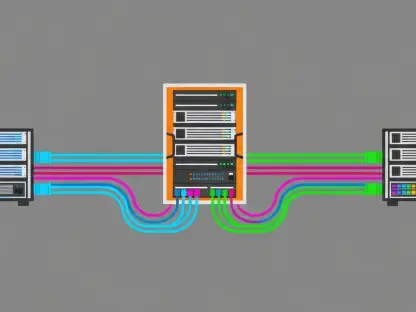What happens when the impossible becomes possible in mere minutes? Quantum computing has emerged as a transformative force, cracking problems that once seemed insurmountable for traditional systems, and it’s no longer just a concept confined to labs. From drug discovery to financial modeling, this cutting-edge technology is actively rewriting the rules of innovation. This seismic shift has captured global attention, promising to solve humanity’s toughest challenges with unprecedented speed and precision. Dive into the breakthroughs that are defining this era and explore how they’re poised to impact every corner of society.
The Urgency Behind Quantum’s Rise
At the heart of quantum computing lies a critical truth: some of the world’s most pressing issues—climate change simulations, advanced medical research, and robust cybersecurity—demand computational power far beyond classical machines. This technology offers a pathway to address these challenges by processing complex data in ways previously unimaginable. Governments and corporations alike recognize the stakes, pouring resources into a field that could dictate global dominance in innovation. The urgency to harness quantum capabilities has never been clearer, as delays could mean falling behind in a rapidly evolving digital race.
This momentum isn’t just about keeping up; it’s about survival in an era where data breaches threaten economies and unsolved scientific puzzles hinder progress. Quantum systems promise to fortify encryption against looming threats and accelerate solutions for life-saving therapies. As industries grapple with the limitations of existing tech, the drive to integrate quantum solutions has become a strategic imperative, positioning this year as a turning point for adoption and impact.
Groundbreaking Advances in Quantum Technology
The landscape of quantum computing has been redefined by remarkable strides in hardware and application. Quantinuum’s Helios system stands out as the most accurate commercial quantum computer to date, enabling integration with tools like Nvidia’s CUDA-Q for real-world research. Meanwhile, Caltech’s achievement of a 6,100-qubit array using neutral cesium atoms has pushed the boundaries of scale, maintaining superposition for 13 seconds and advancing error correction possibilities. These developments mark a leap from experimental concepts to tangible tools ready for deployment.
Beyond hardware, commercial applications are proving quantum’s worth. HSBC reported a 34% improvement in bond trading predictions through IBM’s Heron system, while Ford Otosan slashed scheduling times in production from 30 minutes to under five using D-Wave’s quantum annealing tech. Such examples illustrate how quantum solutions are not just theoretical but are delivering measurable gains across diverse sectors. The ripple effects of these advancements are felt in boardrooms and factories alike, signaling a shift toward practical implementation.
Investment has also skyrocketed, reflecting confidence in quantum’s potential. Equity funding for quantum companies reached $3.77 billion in the first nine months of this year, with firms like PsiQuantum hitting a $7 billion valuation. Government support has surged to $10 billion, underscoring a global commitment to scaling this technology by 2033 through initiatives like DARPA’s Quantum Benchmarking program. These financial injections are fueling innovation and ensuring that quantum progress remains a priority on the world stage.
Voices from the Quantum Frontier
Insights from industry pioneers provide a grounded perspective on quantum’s rapid evolution. Fred Chong from the University of Chicago described the field as having reached “escape velocity,” thanks to breakthroughs in error correction that make large-scale, fault-tolerant systems a realistic goal. His optimism reflects a broader sentiment among experts that quantum computing is transitioning from a scientific challenge to an engineering feat, ready for wider application.
Further depth comes from Deloitte’s Scott Buchholz, who emphasized the strength of quantum-classical hybrid systems in solving complex problems in science and industry. Supporting this view, a recent survey revealed that 81% of optimization leaders feel constrained by classical computing limits, pushing them toward quantum alternatives. These voices highlight a consensus: the technology is not a distant dream but a tool already shaping strategic decisions.
Real-world adopters add a human dimension to the narrative. SoftBank, an early tester of Quantinuum’s Helios, shared how quantum simulations have begun to inform critical business strategies, offering a glimpse into operational transformations. Such anecdotes bridge the gap between abstract innovation and concrete outcomes, illustrating how quantum tech is finding its place in everyday corporate landscapes.
Practical Pathways to Quantum Engagement
For those outside the lab, engaging with quantum computing is no longer optional but essential. Enterprises looking to stay competitive should explore quantum solutions for optimization or simulation challenges, utilizing platforms like Nvidia’s NVQLink to integrate hybrid systems seamlessly. Starting small with pilot projects can yield insights into how quantum tools might enhance existing workflows without requiring a complete overhaul.
IT leaders face a different imperative: safeguarding data against quantum-enabled threats. Adopting post-quantum cryptography, guided by NIST-certified algorithms, is a critical step to protect sensitive information as quantum systems advance. This proactive measure ensures resilience against potential breaches that could exploit current encryption vulnerabilities, a concern amplified by recent research showing quantum algorithms weakening traditional security.
Investors and innovators, meanwhile, have a unique opportunity to shape the future by targeting promising qubit technologies or companies supported by initiatives like DARPA’s. Identifying firms with scalable solutions or novel approaches, such as photonic or hybrid qubit designs, could position stakeholders at the forefront of a burgeoning market. These tailored strategies ensure that diverse groups can navigate and contribute to quantum’s unfolding potential effectively.
Reflecting on Quantum’s Transformative Journey
Looking back, the strides made in quantum computing this year stand as a testament to relentless innovation and bold vision. Hardware feats like Caltech’s massive qubit array and commercial successes at companies like HSBC paint a picture of a technology ready to integrate into mainstream use. The unprecedented investment levels mirror a global belief in quantum’s capacity to redefine problem-solving across industries.
Error correction advancements and hybrid system integrations further solidify the foundation for scalable, reliable quantum applications. Even as debates over benchmarking persist, the claims of quantum advantage inspire confidence that classical limits are being surpassed. The urgency around post-quantum cryptography reminds everyone of the dual-edged nature of such progress, balancing opportunity with responsibility.
Moving forward, the focus shifts to actionable preparation—enterprises must pilot quantum tools, IT teams need to fortify defenses, and investors should seek out pioneering technologies. Collaboration between governments, academia, and industry will be crucial to standardize benchmarks and address cybersecurity risks. As this transformative era unfolds, the path ahead demands not just adaptation but active participation in shaping a quantum-driven future.









